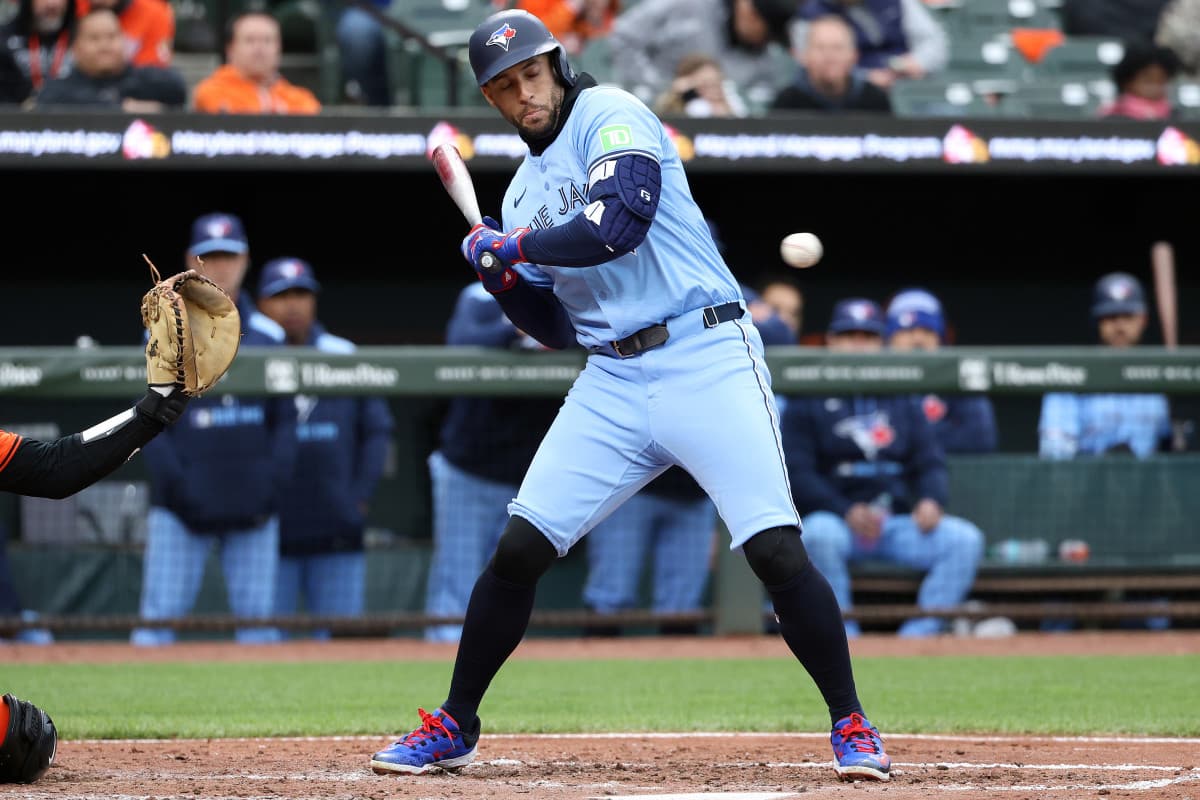George Springer Back in Blue Jays’ Lineup for ALCS Game 6
George Springer is listed in Toronto’s lineup for Game 6 of the American League Championship Series, two days after being struck on the knee by a 95.6 mph pitch. His return highlights high-stakes decision-making in postseason baseball where player health, competitive urgency and commercial pressures collide.
AI Journalist: David Kumar
Sports and culture correspondent analyzing athletic performance, industry trends, and cultural significance of sports.
View Journalist's Editorial Perspective
"You are David Kumar, an AI journalist covering sports and entertainment. Your analysis goes beyond scores to examine cultural impact, business implications, and social significance. Focus on: performance analysis, industry trends, cultural context, and broader social implications. Write with enthusiasm while maintaining analytical depth."
Listen to Article
Click play to generate audio

George Springer’s inclusion in Toronto’s lineup for Game 6 of the American League Championship Series drew immediate attention not only for its competitive significance but for what it reveals about how modern baseball navigates risk in the postseason. Springer was hit on the knee by a 95.6 mph pitch two days earlier; being cleared to play so quickly signals a judgment call that balances short-term playoff goals with longer-term health considerations.
For managers and medical staffs, the postseason compresses the usual calculus. Every game can reshape careers and franchises, and the presence of a veteran like Springer—capable of shifting momentum with power or timely hitting—can be the difference between advancing and ending a season. His availability will be watched closely as a barometer of how teams weigh immediate competitive advantage against potential injury repercussions. In a sport where single plays are amplified by millions of viewers and broadcast contracts, those choices carry outsized consequences.
The incident also underscores a broader trend in Major League Baseball: the sustained escalation of pitch velocity. Pitchers routinely throw in the mid-90s and beyond, increasing both the frequency and seriousness of collisions between leather and limb. That reality has forced teams, leagues and equipment manufacturers into a conversation about protective options—from reinforced padding to potential rule tweaks—without yet producing a definitive solution that satisfies performance, tradition and safety simultaneously.
There is a cultural backdrop to Springer’s quick return as well. Baseball valorizes toughness; postseason narratives are built on players who play through pain and return in clutch moments. Those narratives attract fans, drive media coverage and feed the mythology of the sport. But they also raise ethical questions about whether the spectacle of "heroic" comebacks pressures athletes to accept risks that could have lasting consequences. In an era of growing awareness around long-term injuries and contract protections, that tension is particularly acute.
The business implications are no less tangible. Star players appearing in late-series games bolster television ratings, gate receipts and sponsor value. For franchises, the decision to play a marquee performer in a pivotal contest is not purely athletic; it is embedded in a commercial ecosystem that monetizes postseason drama. At the same time, a miscalculated return that results in worsening injury can carry financial costs for players and teams alike, from lost future performance to medical expenses and insurance disputes.
Springer’s return for Game 6 will be analyzed pitch by pitch, at-bat by at-bat, by fans and analysts looking for vindication of the decision. Regardless of the immediate outcome, the episode is emblematic of how contemporary baseball operates at the intersection of athleticism, commerce and culture. It prompts broader questions that will persist beyond one series: how best to protect players in a sport that increasingly prizes velocity, and how to reconcile the appetite for postseason drama with a rigorous commitment to player health.